
WE ARE HUNTING WHALES in Antarctica and time is running out. Unlike the harpooners of old, our goal is not to butcher them for blubber. Instead, it’s to get close enough to slap satellite-linked tracking tags on them. And rather than kill them, the point is to figure out how to make sure they survive.
It’s humpbacks, among the biggest mammals on Earth, we’re looking for. After three days, the team I’m following, led by Ari Friedlaender, an ecologist who is director of research at the California Ocean Alliance, hasn’t succeeded in tagging one yet. Bundled up in heavy-duty snow pants and fire-engine-red coats, we have seen scores of them. And we’ve gotten near enough to several to shoot hollow-tipped crossbow arrows into them to retrieve wormsized samples of black skin and pink fat that will tell us whether they’re pregnant or stressed or contaminated with pollutants.
But no luck so far with the tags. And we know that we have only a few more days before storms will force us back to the ship that brought us to Antarctica — One Ocean Expeditions’ adventure expedition vessel RCGS Resolute — and back to Argentina. This is the last scientific expedition of the season. And it’s almost over.
So, this morning we’re riding low to the water in three inflatable Zodiacs, bumping through chunks of brilliant white ice in Wilhelmina Bay near the top of the Antarctic peninsula. It’s one of the whales’ favourite feeding spots. The air is crisp. The sea is the colour of a storm cloud. We are alert for any sign of action: the spurt of a blowhole, the fishy smell of their breath, a fin, a tail fluke, the sleepy top of a humped back suspended in the water.
Again and again, the boat carrying Friedlaender and the taggers tries to sneak up on a whale. Again and again, the humpbacks sense the approach and, with seconds to spare, dive beyond reach.
Bu hikaye Canadian Geographic dergisinin Best of Canadian Geographic, 2019 sayısından alınmıştır.
Start your 7-day Magzter GOLD free trial to access thousands of curated premium stories, and 9,000+ magazines and newspapers.
Already a subscriber ? Giriş Yap
Bu hikaye Canadian Geographic dergisinin Best of Canadian Geographic, 2019 sayısından alınmıştır.
Start your 7-day Magzter GOLD free trial to access thousands of curated premium stories, and 9,000+ magazines and newspapers.
Already a subscriber? Giriş Yap
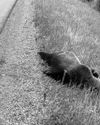
ANIMAL XING
THIS PAST SUMMER AN AMBITIOUS WILDLIFE UNDER/OVERPASS SYSTEM BROKE GROUND IN B.C. ON A DEADLY STRETCH OF HIGHWAY JUST WEST OF THE ALBERTA BORDER. HERE’S HOW IT HAPPENED.
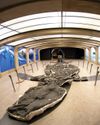
Unearthing a giant
Almost 30 years ago, paleontologist Elizabeth “Betsy” Nicholls made a discovery of colossal proportions
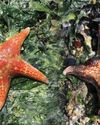
WE DID THIS
AS THE IMPACTS OF GLOBAL WARMING BECOME INCREASINGLY EVIDENT, THE CONNECTIONS TO BIODIVERSITY LOSS ARE HARD TO IGNORE. CAN THIS FALL’S TWO KEY INTERNATIONAL CONFERENCES POINT US TO A NATURE-POSITIVE FUTURE?
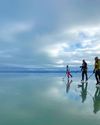
The COOLEST COUNTRY
“The coolest country” celebrates the wonders of winter with an all-Canadian theme. The 20-page travel planner includes a bucket list from travel writer Robin Esrock, steamy spa ideas, ice fishing destinations, festival fun, northern itineraries and more!
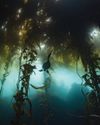
KEEPER of the SEA
FROM BEING LABELLED DEVIL’S APRON BY FRUSTRATED FISHERMEN TO BEING LAUDED AS A SUSTAINABLE FOOD SOLUTION: HOW KELP’S POTENTIAL IS BEING REALIZED, JUST AS SCIENTISTS LEARN IT’S DECLINING
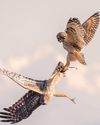
WILD THINGS
WILD CANADIAN GEOGRAPHIC PRESENTS THE WINNERS OF ITS ANNUAL CANADIAN WILDLIFE PHOTOGRAPHY OF THE YEAR COMPETITION

AN EMPTY LANDSCAPE
AFTER MORE THAN A MILLION YEARS ON EARTH, CARIBOU ARE UNDER THREAT OF GLOBAL EXTINCTION. THE PRECIPITOUS DECLINE OF THE ONCE MIGHTY HERDS IS A TRAGEDY THAT IS HARD TO WATCH — AND EVEN HARDER TO REVERSE.
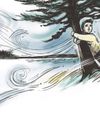
NORTHERN EXPOSURE
BON INTO A CARIBOU-HUNTING CREE FAMILY IN NORTHERN MANITOBA, ACCLAIMED PLAYWRIGHT AND NOVELIST. TOMSON HIGHWAYS PAYS TRIBUTE TO THE MAGICAL WORLD OF HIS CHILDHOOD IN PERMANENT ASTONISHMENT
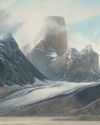
INTO THE ARCTIC
CANADIAN PAINTER AND FILMMAKER CORY TRÉPANIER EXPLORES THE SUBLIME AND RAPIDLY CHANGING CANADIAN ARCTIC

Under the ice
Until the last decade, we knew little about what lay beneath the Arctic ice. Now scientists and explorers are shedding light on this vanishing world.